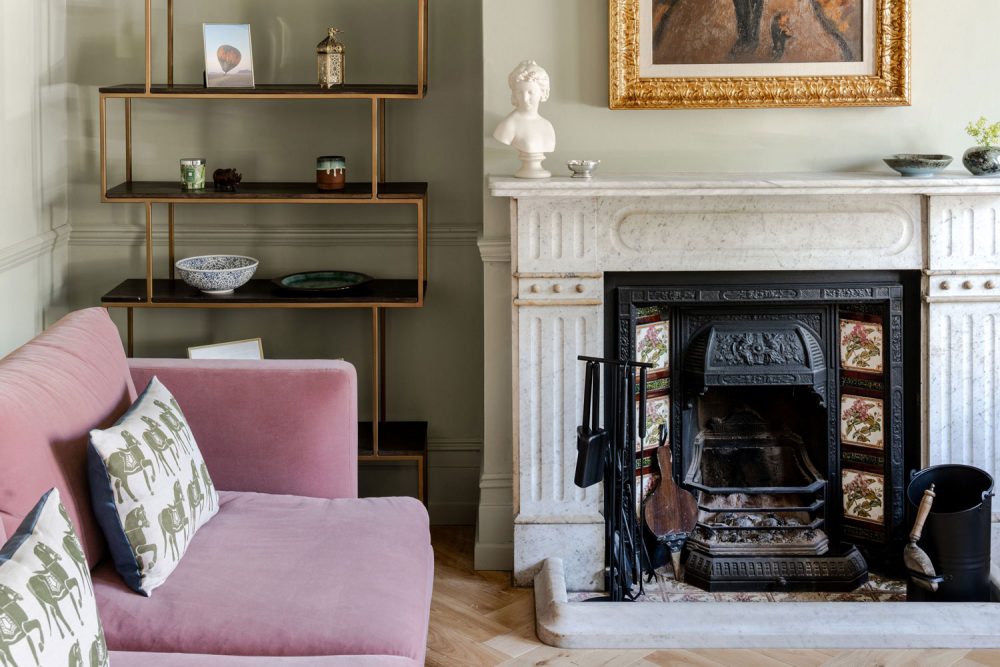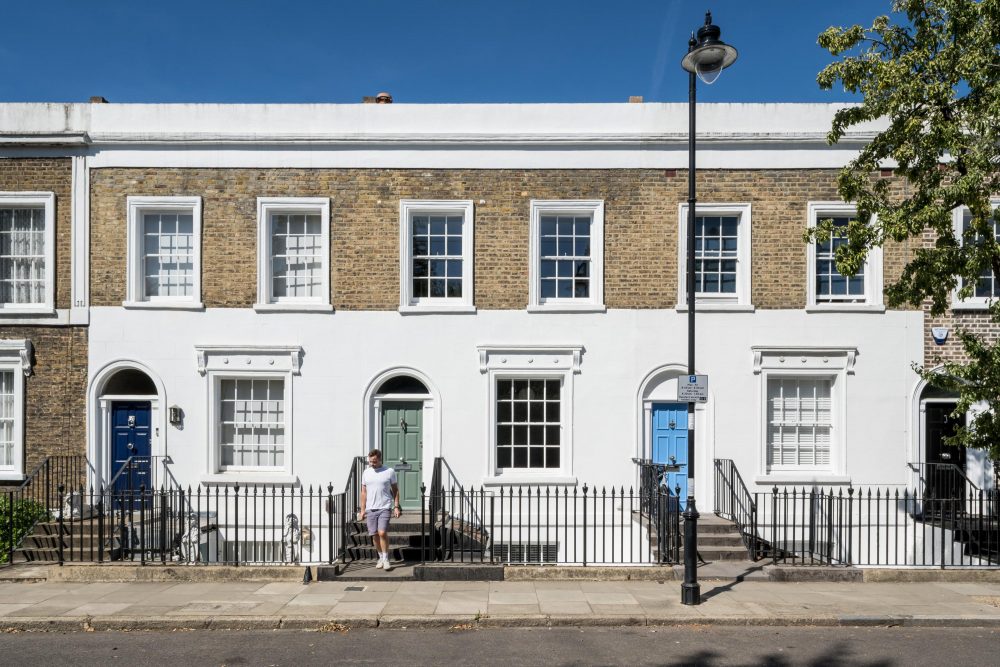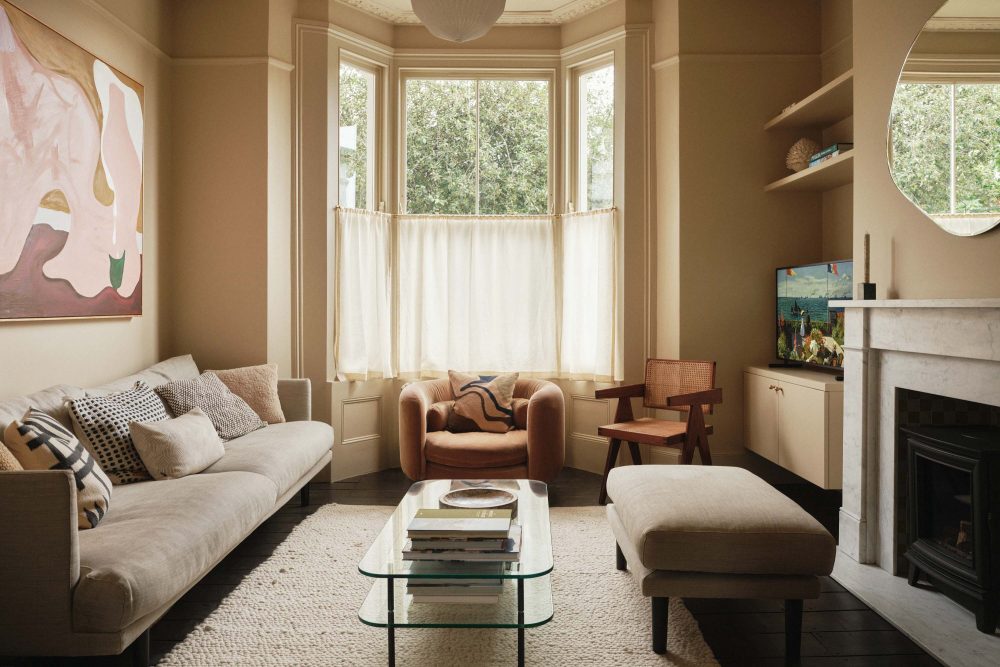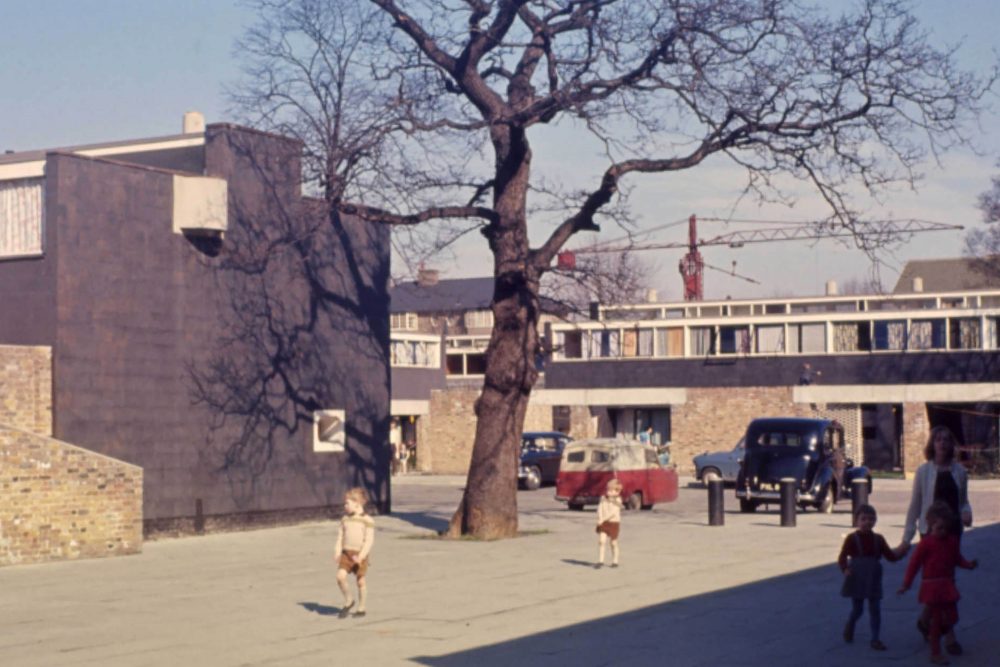Owning a period home in London is both a joy and a juggling act. They’re beautiful, generous, and full of character, but they also come with quirks, restrictions, and the occasional conservation officer. Whether your house is officially listed or simply sits in a conservation area, the goal is the same: to make it feel timeless and liveable.
We’ve been doing this long enough to know that period homes have their own rules. Our role is simple: respect them, bend them where it counts, and make sure they actually function for today.
Working with Character, Not Against It
Modernising a Victorian, Georgian, or Edwardian home isn’t about turning it into something else, it’s about helping it evolve. Opening up a ground floor while keeping the rhythm of the façade, adding light without stripping away charm, or introducing modern flow in rooms with high ceilings and period proportions: that’s the skill.
When you design with a building’s logic, not against it, the results feel effortless. A kitchen can feel modern under original beams, a bathroom can tuck neatly behind period panelling, and the house still feels like itself, only better.

Listed Buildings vs. Conservation Areas: What You Need to Know
Period homes in London often fall into one of two categories, and the distinction matters.
Listed Buildings are nationally protected. Any work that affects their character, internal or external, requires Listed Building Consent. This includes things you might not expect: doors, windows, fireplaces, and even some internal layouts. Planning permission is separate, and the rules are strict for good reason.
Conservation Areas focus on the wider neighbourhood rather than a single property. External works, extensions, and material changes are closely watched, but internal alterations often have more flexibility.
Either way, the trick is early engagement. Speak to conservation officers, consultants, and sometimes even neighbours. It’s easier to get permissions when people see you know what you’re doing, and care.
Balancing Preservation with Modern Comfort
Here’s where the real skill comes in: improving living conditions without erasing history. Period homes weren’t designed for 21st-century comfort. Thermal performance, insulation, underfloor heating, and energy efficiency all require careful thought.
Over-insulate and you risk moisture problems or damage to historic plaster. Under-insulate and the house remains drafty and inefficient. The challenge, and the fun, is finding that sweet spot. By combining traditional materials, modern technology, and a deep understanding of the building’s construction, it’s possible to improve comfort while retaining character.
This balancing act is central to everything we do. It’s not about making compromises for the sake of rules; it’s about being clever, precise, and thoughtful so that comfort and character coexist.

Modern Comfort, Historic Soul
At BVDS, we see period homes as endlessly adaptable. With the right interventions, you can add light, flow, and warmth without compromising the original details. Every decision — from glazing to heating to storage, is carefully considered so it disappears into the fabric of the building.
Our approach is part translator, part tactician. We translate historic language into spaces that function beautifully for modern life and negotiate with the realities of planning, conservation, and construction to get there.
The Fine Art of Restraint
Designing for period homes requires patience, subtlety, and a bit of cheek. You can’t rush it, and you can’t impose too much. The most successful interventions feel natural, almost inevitable, while preserving the house’s personality.
It’s a careful balance: respecting history while introducing innovation, improving comfort without erasing charm, and solving tricky modern problems without ever shouting about it. Done well, the house feels alive, generous, and quietly confident.

Closing Note
London’s historic homes don’t need to be museums. With the right approach, they can be reimagined for modern life, light-filled, practical, and full of character. The key is knowing what to preserve, what to change, and how to make the two coexist.
That’s where experience and a little audacity go a long way.
Contact Us
If you’re thinking about starting a project and want a team that brings ideas, clarity, and experience to the table, while keeping the process collaborative and enjoyable, we’d love to hear from you. Get in touch to start a conversation.













